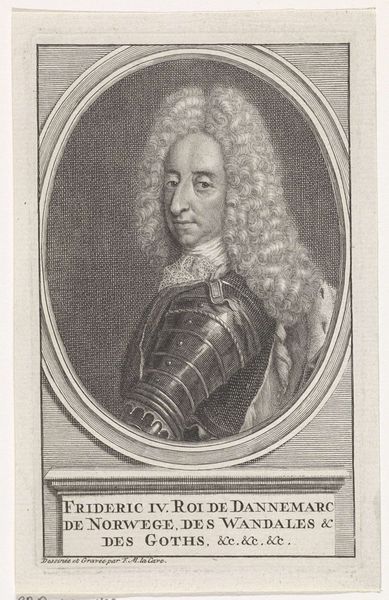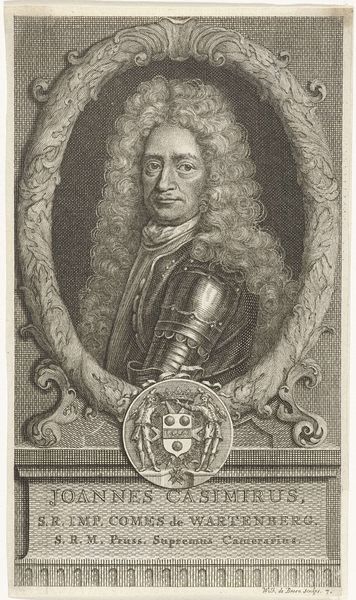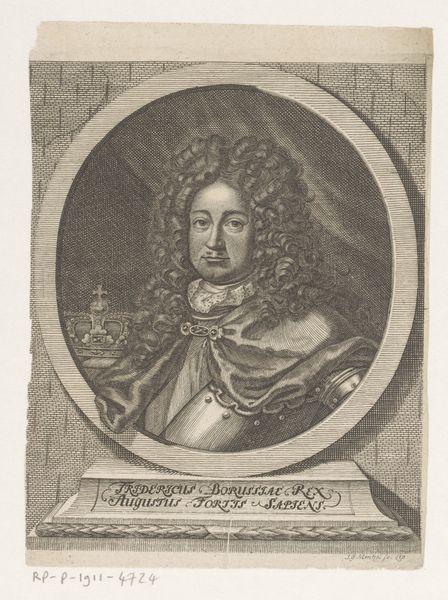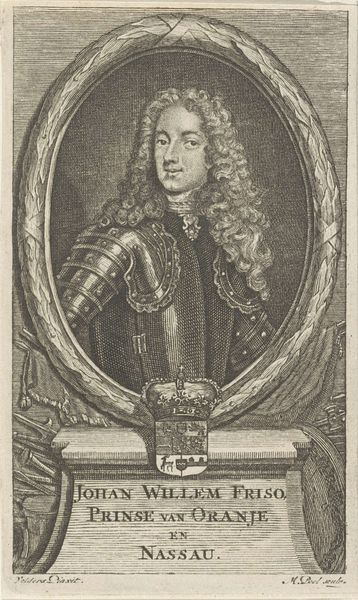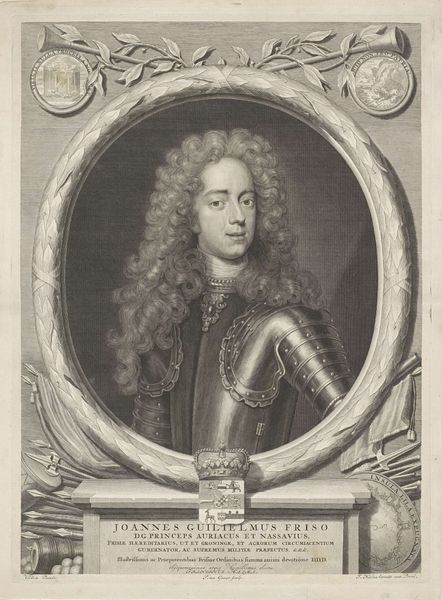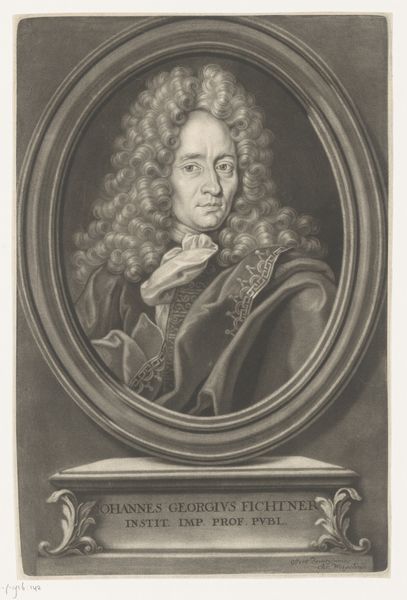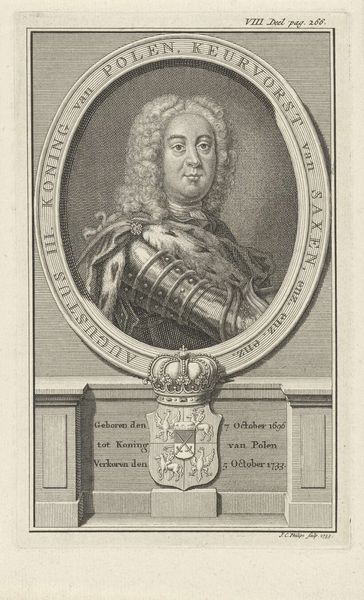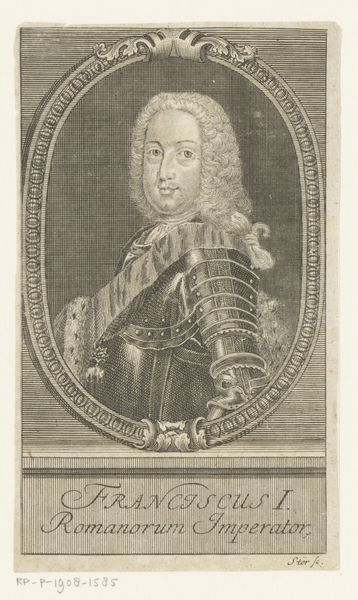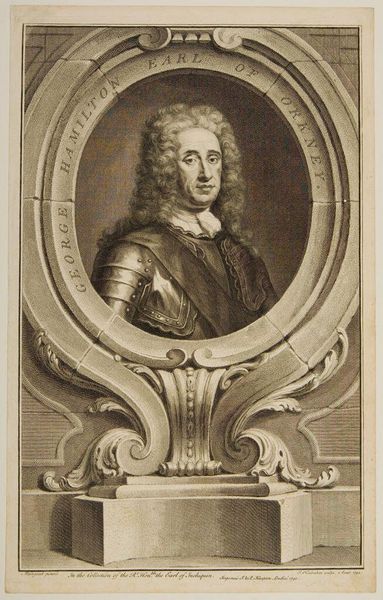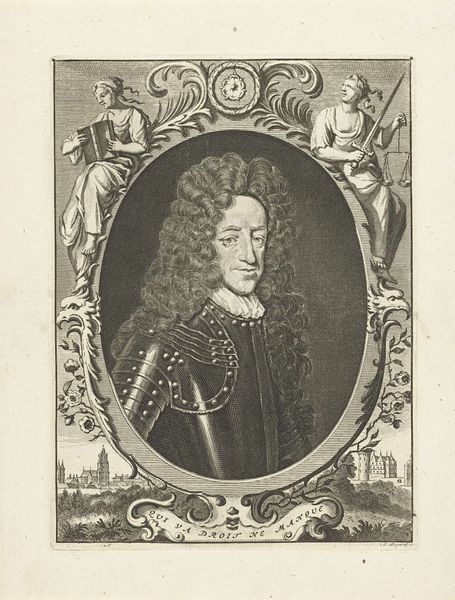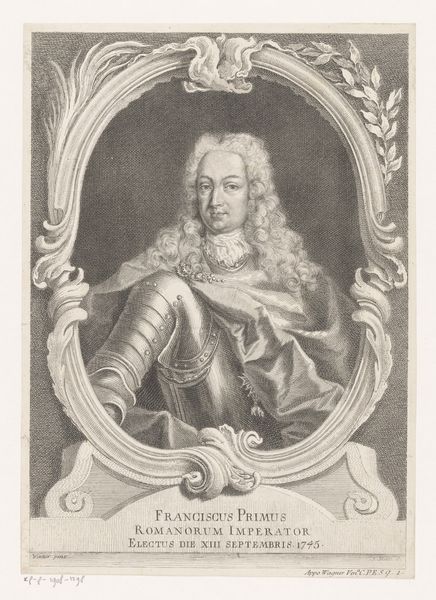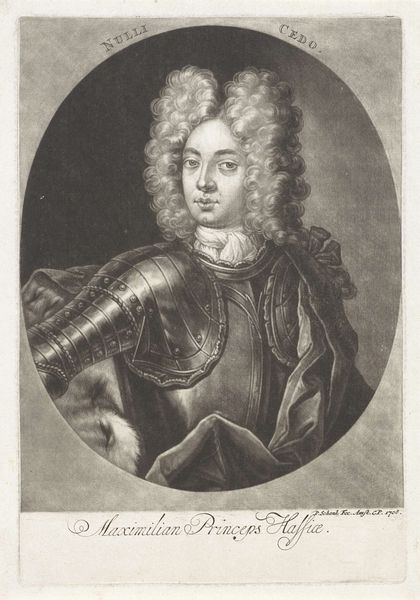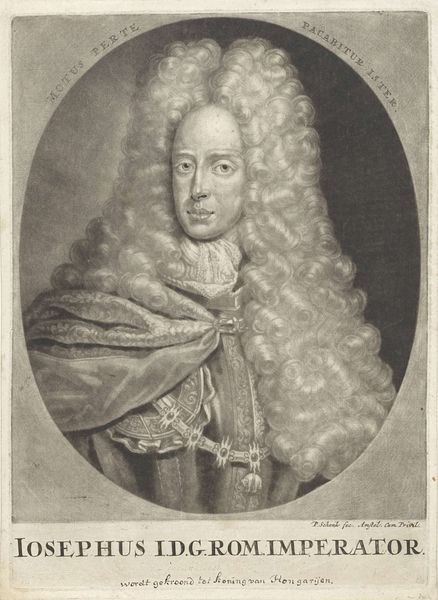
print, engraving
#
baroque
# print
#
old engraving style
#
caricature
#
line
#
history-painting
#
engraving
Dimensions: height 295 mm, width 180 mm
Copyright: Rijks Museum: Open Domain
Curator: This engraving, dating back to 1707, is a portrait of Eugène-François de Savoye, also known as Prince Eugene of Savoy. It’s currently held in the collection of the Rijksmuseum. Editor: It's arresting, isn’t it? The fine lines, all those textures from the wig to the armor… You can almost feel the weight and formality through the printmaking. Curator: Absolutely. It embodies the aesthetic of the Baroque period, celebrating the status of important figures, often in the service of political maneuvering. Printmaking was vital at the time for distributing imagery. Editor: And the repetitive, controlled labor needed to create that plate! Just imagine the craft involved in each impression, meticulously transferring the design to paper. Look at how the armour is realized; you could replicate that to create armour almost identically. It speaks to the cultural values placed on representation and reproduction, how artisans turned those things into capital. Curator: Indeed. Prince Eugene, a celebrated military leader, is deliberately presented as a powerful figure in armour, and framed by leaves, further amplifying his image within the public imagination. His military campaigns secured considerable land and wealth for the Austrian empire. Editor: Note the materials. Ink, paper, metal—common, everyday stuff, but look how they're used to broadcast wealth, authority, and conquest! What kind of social and cultural authority would be applied through mass printing for circulation throughout Europe? Curator: Precisely. The distribution of these portraits aided in cementing his position in the minds of people across Europe and it shaped the historical narrative surrounding him. Editor: This print, therefore, is much more than just ink on paper; it's a record of skilled labor and social power. It’s a manufactured ideal carefully disseminated and reinforced through materiality and circulation. Curator: An exercise in crafting and propagating carefully sculpted personae to shape public consciousness, certainly. I am not certain it could affect many other countries other than to create allies in favor of Eugene-François’ strategies. Editor: I agree, that would ultimately depend on who his allies are. In short, the work tells its own crafted material histories while also functioning within Europe’s political and social contexts. Curator: And it also lets us better understand the mechanisms used to mold public opinion in centuries past. Thank you for discussing it with me.
Comments
No comments
Be the first to comment and join the conversation on the ultimate creative platform.
